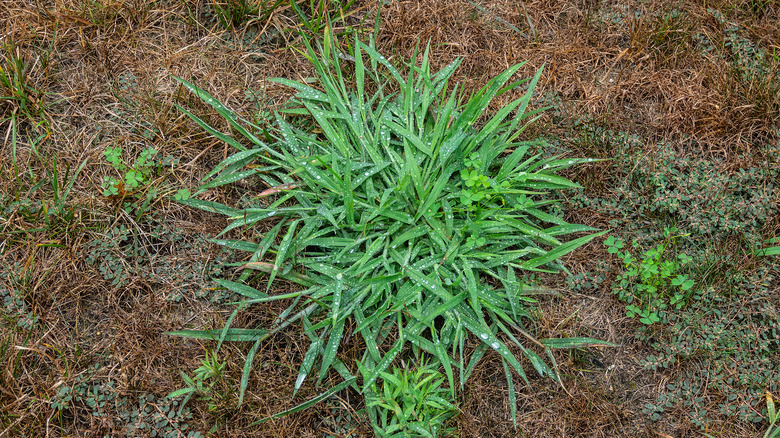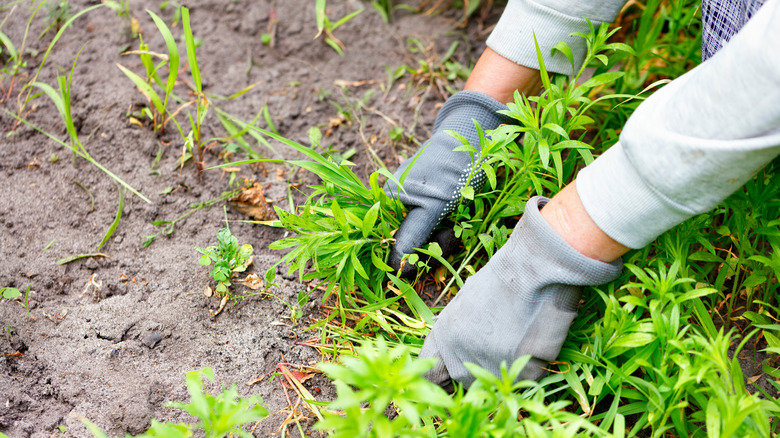The Best Time Of Year To Kill The Unsightly Crabgrass In Your Lawn
It's no secret that crabgrass is the bane of many property owners who want to grow a lush, healthy lawn. This annual grassy weed plagues lawns and gardens across the country and is characterized by its low-growing, spreading habit and coarse texture. Crabgrass can quickly overrun turfgrass (and other weeds) and create unsightly patches in an otherwise pristine lawn. It's commonly found in areas with densely packed soil and poor drainage and can infiltrate properties with inadequate lawn care practices. Crabgrass thrives in warm, sunny conditions and can germinate and spread rapidly during summer. While regular mowing and proper lawn maintenance can help control its growth to some extent, many homeowners resort to chemical herbicides or manual removal to eliminate crabgrass.
However, the timing of crabgrass control efforts is just as crucial as the method used. Applying herbicides or taking other measures when crabgrass is already established can be less effective and more challenging. Instead, targeting crabgrass before it germinates and takes hold in the lawn is often the most efficient approach. To effectively combat crabgrass and prevent its proliferation in your lawn, consider applying a preemergent herbicide in early spring. Preemergent herbicides work by inhibiting the germination of crabgrass seeds in the soil, effectively stopping the weed in its tracks before it becomes a problem.
The benefits of using a preemergent herbicide against crabgrass
Using a preemergent in your lawn during early spring to combat crabgrass offers several benefits beyond having a healthy and weed-free lawn. Aside from inhibiting the germination of crabgrass seeds, preemergent herbicides specifically target weed seeds, allowing you to control crabgrass without harming established turfgrass or desirable plants in your lawn and garden. Some preemergent herbicides also provide residual control that lasts several weeks to months, depending on the product used. This extended protection helps keep crabgrass at bay throughout the critical germination period, reducing the need for repeated applications.
Apply preemergent herbicide in early spring when soil temps reach 55 to 60 degrees Fahrenheit, before crabgrass seed germination. Follow the manufacturer's instructions when applying a preemergent herbicide, and wear protective gear. Use a broadcast spreader to distribute the herbicide evenly over the lawn area. Water the lawn lightly after application to activate the herbicide and ensure proper incorporation into the soil. Take precautions to avoid applying preemergent herbicides near desirable plants, as they can also inhibit the germination of other seeds.
Additionally, avoid mowing the lawn for a few days before and after applying preemergent to allow the herbicide to penetrate the soil effectively. To prevent crabgrass from returning, maintain proper lawn care practices such as regular mowing, adequate watering, and soil aeration. Doing these things supports the growth of thick, healthy turfgrass that can outcompete weeds.

